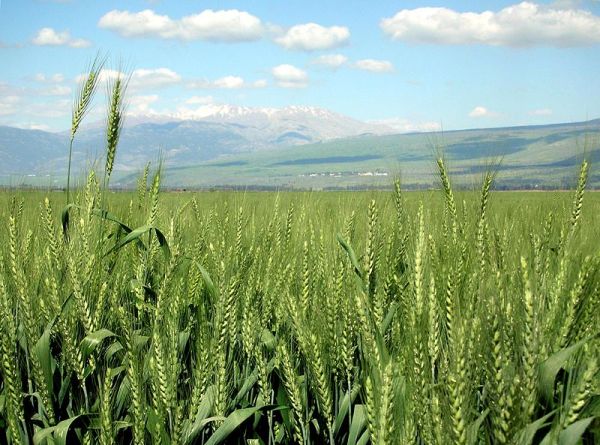Green revolution in India
The green revolution in India is a period when agriculture in India was converted into an industrial system by adapting to modern technology and techniques. The Father of the green revolution in India is MS Swaminathan.
Green revolution definition in economics
The green revolution is defined as using various techniques such as HYV Seeds, Chemical fertilizers, Irrigation, etc, to increase the yield of crops such as Rice, Wheat, etc. It made food grains cheap, ensured food security, and made a lot of countries’ food self-sufficient.
Hyv definition
It is expanded as High Yielding Variety. These seeds are better than normal seeds, as they are generally genetically modified that give high yields, disease resistant and resistant against insect or pest.
Also, it had some bad effects on the environment. Initially in India, it was introduced in Haryana, Punjab, and Western Uttar Pradesh. After its success, it was introduced to other states.
The food Producing industry and also its allied industry improved a lot. As more than 60% of the population of India is dependent on Agriculture, directly or indirectly.
The father is this revolution is Norman Borlaug and India, in India, it is M.S. Swaminathan.
Green revolution in India’s year
The Green Revolution spread during 1967-68 to 1977-78. This revolution changed India’s status from a food-deficient nation to one of the world’s leading agricultural nations.
The second Green Revolution is the latest word coined. It is a change in agricultural production to feed a growing population on the earth.
Also in India, The second Green revolution is encouraging the use of organic methods for agriculture.

It is associated with agriculture with the introduction of new techniques. This become popular in early 1960. This technique was first applied to wheat and then to rice.
This method completely changes the traditional methods of food production, as it increased the yield to more than 250%.
The method around this type of agriculture is the use of HYV seeds which are also called High Yielding Variety seeds. HYV seeds were developed by Norman Borlaug and US Agriculture Scientist in his research at British Rockefeller Foundation in early 1960.
The new wheat seed called Vivo claimed to have increased the yield up to 200%. These seeds were successfully tested in food-deficient countries such as Mexico, Taiwan, etc in 1965.
Farming techniques
The farming technique used HYV Seeds, Chemical fertilizers, Irrigation, Chemical Pesticides, or Germicides.
Green revolution fertilizer
Since using HYV seeds requires greater nutrients from the soil. The natural nutrients available in the soil are sufficient to provide nutrition to these seeds. Also, natural fertilizer is enough to provide nutrients.
As a result, chemical fertilizers used in these revolutions are Urea (N), Phosphate (P), and Potash (K).
HYV Seeds
HYV seeds are popularly known as Dwarf varieties of seeds. After repeated mutation, Norman Borlaug made the plant Dwarf and the Grain Heavier.
These seeds are non-Photosynthetic thereby it does not depend on sunray for targeted yields.
Irrigation
For the controlled growth of crops using HYV seeds and chemical fertilizer, it needed a controlled supply of water.
The controlled supply of water means, the land should be free from floods, and water runoff. As a result, this needs an artificial water supply. This demanded the development of Irrigation.
Pesticides and Germicides
Since these seeds were new to the habitat, they were prone to attack by Pests and various germs. As a result, It needs chemical pesticides and germicides to secure the yield.
Green revolution pros and cons
The green revolution definition in economics is its advantages over traditional methods of farming. The Food deficient countries went on to become self-sufficient. Also started to export food grains to other countries.
A good example of this is India. India was earlier important wheat from the USA, USSR, etc. After the success of the Green revolution, India started exporting food grains.
The green revolution started in India in the 1960s. The success was tasted as early as the 1970s. The green revolution definition in economics also had a bad face. Yes, It has disadvantages too.
This disadvantage we mainly on the ecological side. It required more land as a result several acres of forest were destroyed, and the use of chemicals degraded the soil and poisoned the food chain.
The increased use of water made the water table down.
Impact of the Green revolution on India
It resulted in a record output of 131 Million Tonnes in 1978-1979. This made India one of the largest producers of food in the world. The total yield improved by 30% compared to 1947 to 1979.
By this, the production of rice and wheat doubled but the production of other crops declined considerably.
Due to the green revolution, certain measures were taken such as increasing the area under farming, double cropping, use of chemical/inorganic fertilizers and pesticides, also use of HYV seeds.
Another impact is there is a great improvement made by the government in inland irrigation all around the country. This helped commercial cropping and there improved the economy of people and also India’s economy.
Conclusion
Green Revolution has made several countries’ food self-sufficient. But it has a devastating effect on the environment due to the increased use of chemicals and more water supply.
